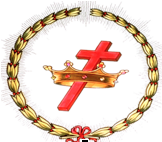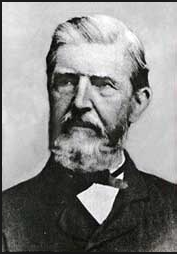
Nelson H. Barbour
In December 1875, Charles Taze Russell, then a businessman from Allegheny, PA received a copy of Herald of the Morning. He met the principals in the Barbourite movement and arranged for Barbour to speak in Philadelphia in 1876. Barbour and Russell began their association, during which Barbour wrote the book Three Worlds (1877) and published a small booklet by Russell entitled Object and Manner of Our Lord’s Return. Beginning in 1878, they each wrote conflicting views on Ransom and Atonement doctrine. By May 3, 1879, Russell wrote that their "points of variance seem to me to be so fundamental and important that... I feel that our relationship should cease." In a May 22, 1879 letter to Barbour, Russell explicitly resigned: "Now I leave the 'Herald' with you. I withdraw entirely from it, asking nothing from you . . . Please announce in next No. of the 'Herald' the dissolution and withdraw my name [as assistant editor on the masthead]." In July 1879, Russell began publishing Zion's Watch Tower, the principal journal of the Bible Student movement. https://en.wikipedia.org/wiki/Nelson_H._Barbour
1. Three Worlds and the Harvest of This World
2. Herald of the Morning-Barbour, Editor
John Aquila Brown published in The Even-Tide that the "seven times" of Daniel 4 were prophetic of 2,520 years, running from the beginning of Nebuchadnezzar's reign in 604 B.C. to 1917 A.D.
Henry Dunn
Henry Dunn wrote "The Study of the Bible" in 1871. His writing had an influence on Pastor Charles Taze Russell's writings on salvation and restitution.
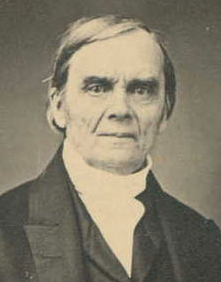
Henry Grew was a Christian teacher and writer whose studies of the bible led him to conclusions which were at odds with doctrines accepted by many of the mainstream churches of his time. Among other things, he rejected the Triniy, immortality of the soul, and a hell of literal eternal torment.
- An Examination of the Divine Testimony Concerning the Character of the Son of God
- Articles Written by Henry Grew (Look under the history section of the Bible Student Library)
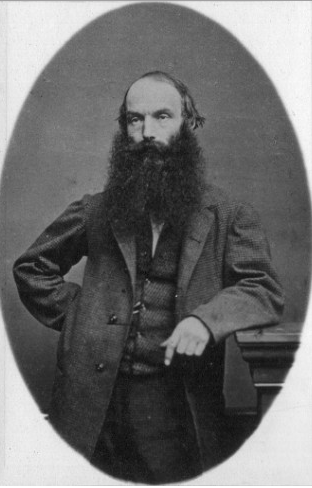
Dunbar Heath was the third son of George Heath, serjeant-at-law. He was educated at Trinity College, Cambridge, where he was elected scholar in 1836, and graduated B.A. in 1838. From 1840 to 1847 he was a fellow of Trinity.[1] As a recognized authority on Egyptology, he was one of the early translators of the papyri in the British Museum. In 1852 Heath wrote The Future Human Kingdom of Christ, in which he distinguished the “saved nations from the glorified saints” by outlining an early concept of “the two salvations.” He was prosecuted for heresy in 1861 by the Bishop of Winchester and sentenced by the Court of Arches for publishing these ideas. He would not recant and tried to appeal his sentence by attempting to defend his character and doctrine from the Scriptures through the writing of several booklets. All of this failed and as a result of this prosecution he suffered not only the loss of his profession, but sustained heavy financial losses as well. (taken from Wikipedia.org)
(Visit http://www.jjhc.info/heathdunbar1888.htm to learn more about this remarkable man.)
William Miller
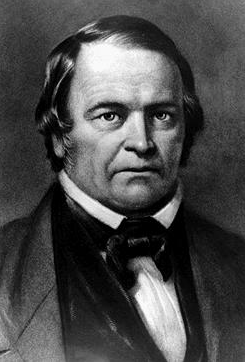
William Miller founded Millerism. Miller, a farmer from New York, claimed to have discovered when Jesus Christ would return to Earth as stated in the Bible. Miller formed this belief in the 1820s but did not begin to share it with other people until the 1830s. By the early 1840s, approximately one million people had attended camp meetings and heard Miller's message. Perhaps ten percent of those people actually believed Miller and became known as Millerites. (taken from Ohio History)
- 1841 Christ's Second Coming
- 1840 Miller Chart
- William Miller Memoirs Excerpt
- Dissertations on the true inheritance of the saints and the 1260 days of Daniel and John
- Prophetic Chronology
- Memoirs of William Miller
- History of the Second Advent Believers
- History of the Second Adventist Message

Dwight Moody was an American evangelist and publisher connected with the Holiness Movement, who founded the Moody Church, Northfield School and Mount Hermon School in Massachusetts (now Northfield Mount Hermon School), the Moody Bible Institute, and Moody Publishers.
- The Life of Dwight Moody by his son, William Moody
- The Way to Life
- The Ten Commandments
- Secret Power
- The Over Coming Life
Joseph A. Seiss
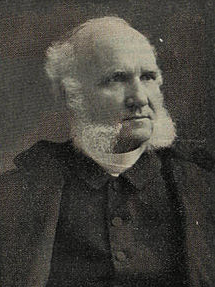
Of Moravian roots, Seiss studied for the ministry at Gettysburg College and Seminary, Pennsylvania, and was ordained a Lutheran pastor in 1848. After serving congregations in Virginia and Maryland, he moved to Saint John’s Lutheran Church in Philadelphia, Pennsylvania; in 1874, he became pastor of the Church of the Holy Communion in Philadelphia. He also served as president of the Pennsylvania Ministerium and the General Council. (taken from Hymm Time)
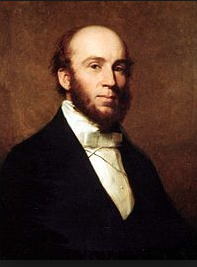
Charles Piazzi Smyth was a Victorian antiquarian-astronomer. He was born in Naples, Italy, to Captain (later Admiral) William Henry Smyth and his wife Annarella. He was called Piazzi after his godfather, the Italian astronomer Giuseppe Piazzi, whose acquaintance his father had made at Palermo when serving in the Mediterranean. In 1846 he was appointed Astronomer Royal for Scotland, based at the Calton Hill Observatory in Edinburgh, and professor of astronomy in the University of Edinburgh. Later, he wrote a popular account of a scientific voyage in Teneriffe, an astronomers Experiment. It was the first book ever illustrated by stereoscopic photographs ('photo-stereographs') and included 20 stereo views of Teneriffe taken by the author using the wet collodion process. A stereoscope could be purchased which allowed the pictures to be viewed in 3-D without removing them from the book. In 1871 and 1872 Smyth investigated the spectra of the aurora, and zodiacal light. Smyth went on an expedition to Egypt to accurately measure every surface, dimension, and aspect of the Great Pyramid and subsequently published his book Our Inheritance in the Great Pyramid in 1864. He died in 1900 and was buried at Saint John's Church in the village of Sharow near Ripon. A small stone pyramid-shaped monument, topped by a Christian cross, marks his grave site. (this was taken from Steiner books)
- Life and Work at the Great Pyramid
- Our Inheritance in the Great Pyramid
- New Measurements of the Great Pyramid
- Imaginary Metrological System of the Great Pyramid
R. E. Streeter

Randolph Elwood Streeter (February 11, 1847 – 1924), often referred to as R. E. Streeter, was one of the founding fathers of the Pastoral Bible Instituteand a member of the editorial board of that church's The Herald of Christ's Kingdom magazine.
Streeter was born Feb. 11, 1847 in North Smithfield, Rhode Island. His parents moved to Providence, Rhode Island, in 1850 where he spent his youth and eventually entered the jewelry business. He married Isabel Brown in 1868 and had three children: Frank E., Arthur B., and Elizabeth Streeter. In 1877 he moved to Auburn, Rhode Island, where he would spend the remainder of his life. His wife died after 13 years, and in 1882 he married her sister, Margaret E. Brown, to whom were born four more children: Frank H. Thompson, John L. Leonard, Alice M., and Randolph H. Streeter.
Streeter became a Christian in 1877 and was originally associated with the Free Baptist church. Finding denominational restrictions too binding, he left that fellowship and joined the Evangelical Advent church. He first received The Divine Plan of the Ages in 1896 but rejected it as a false teaching. The following year he was sent on a successful missionary assignment to South America and the West Indies where he received another copy of that book and read it on his return journey. This time he accepted its message.
As editor, beginning in 1892, of a small journal, The Testimony of Jesus, he continued its publication and presented to his readers the new views he was learning. Eventually he discontinued the magazine and in 1902 entered the pilgrim ministry under Pastor Charles Taze Russell.
He was a member of The Herald editorial committee beginning in 1918 and was elected a trustee of the Pastoral Bible Institute in 1923, serving in that capacity until his death the following year. He was a deep student of prophecy and was the author of Daniel, the Beloved of Jehovah and The Revelation of Jesus Christ.
George Stetson
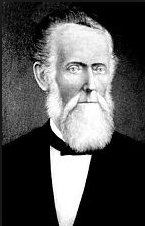
George Washington Stetson, son of Reuben and Lois (Smedley) Stetson, was born in Champlain, New York. He associated with Henry Grew and George Storrs in his early ministry, and even later with Jonas Wendell and Charles Taze Russell. He was not only a minister, but also a school teacher, and physician. As a member of the Advent Christian Church he and Wendell worked together in several churches throughout Pennsylvania and Ohio in the early 1870s. They also wrote for George Storrs’ magazine The Herald of Life and the Coming Kingdom, and for other magazines such as The World's Crisis.
He married Mary Porter (died 1855) of Pittsburgh, Pa., with whom he had two children: Mary Catherine Stetson (born Feb.. 8, 1847 in Pittsburgh) and Charles Porter Stetson (born Apr.. 25, 1849 in Cleveland, Ohio.) He later married Anna Elizabeth Barlow (born Apr.. 15, 1834 in Winchester, VA.; died aged 94 years) with whom he had a son, George Washington Stetson (born Sept.. 16, 1861 in Cleveland, Ohio.)
For ten months during 1872, Stetson was the pastor of the church in Pittsburghwhere he met the young Charles Taze Russell. He was pastor of the Edinboro, Pennsylvania Advent Christian Church for six years until his death in 1879. His dying request was that Pastor Russell give his funeral sermon, where over twelve hundred attended. He was buried in Edinboro, Pennsylvania. His obituary featured in the November 1879 issue of Zion's Watch Tower stated:
"Death has laid our brother low. He died at his home, Edinboro, Pa., Oct.. 9th, 1879. Though an event not entirely unexpected, since he has been seriously ill for some time, yet his death is a heavy blow to his many friends abroad as well as at home. He was beloved and esteemed by his fellow townsmen of all denominations as well as by the congregation of which he was pastor."
Articles Written by George Stetson (Look under the history section of the Bible Student Library)
George Storrs
While traveling on a train, George Storrs picked up a tract he found on the floor which was about the condition of the dead. He found out later that it was written by Henry Grew. In 1842 after a few years of study on this subject, Storrs began to preach this message to many of the Adventists. After writing a book on the subject, he started a magazine, entitled The Bible Examiner, for the same purpose. He differed from Grew’s teachings in respect to the destiny of the wicked. Storrs believed these would go into second death and not be resurrected to judgment. The two debated the matter until Henry Grew’s death in 1862.
A decade later, during a severe illness, Storrs reconsidered his views on the wicked, and determined that the Scriptures taught that the wicked would be resurrected to an education in the knowledge of God, to judgment, and that all the families of the earth would be blessed because of the promise to Abraham. He was later surprised to find other individuals teaching these same doctrines, one of whom was Henry Dunn, who a decade earlier had been teaching these things in England. Because of these views, his friends forsook him and Storrs became an independent publisher of these teachings. During these years Pastor Russell wrote for Storrs’ magazine until Storrs’ death in 1879. (taken from The Herald Magazine)
- A biographical Sketch taken from archive of the harvest herald
- Various Prophetic Expositions
- Unity of Man
- Death Not Life
- Six Sermons
- Annihilation of the Wicked
- The Bible Examiner, editor Storrs
John Taylor
John Taylor was the author of the 1859 book "The Great Pyramid", in which he argued that the numbers Piand Phi may have been deliberately incorporated into the design of the Great Pyramid of Khufu at Giza, whose perimeter is close to 2Pi times its height. His theories in Pyramidology were then expanded by Charles Piazzi Smyth.
His 1864 book The Battle of the Standards was a campaign against the adoption of the metric system in England, and relied on results from his first book to show a divine origin for the British units of measure.
